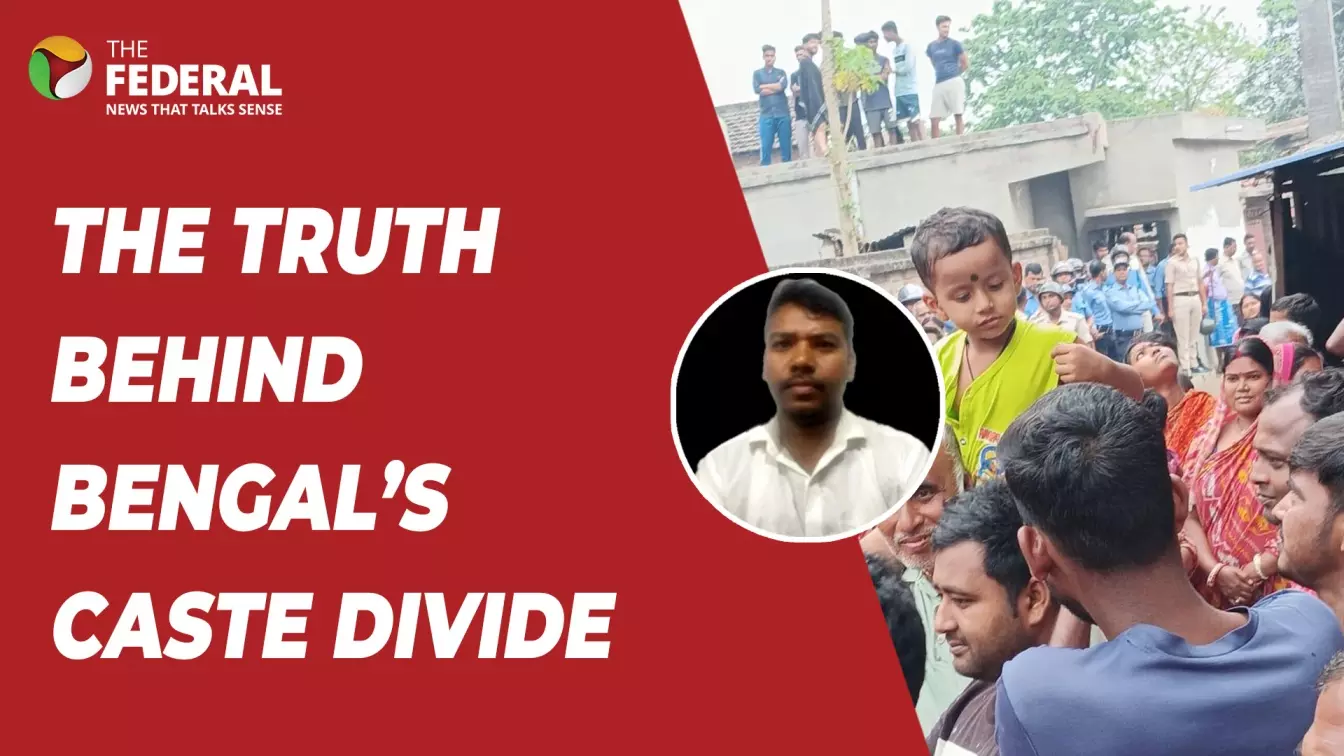
Is Bengal really caste-neutral? Hear it from Dalit rights activist Ram Prasad Das
If Bengali society really ‘caste-less’, as many believe? The general secretary of the Ravidasia Mahasangha sheds light on the situation in Bengal’s villages

Is West Bengal really caste-neutral, as it is widely believed? In an exclusive interview with The Federal, Ram Prasad Das, General Secretary of the Ravidasia Mahasangha, shed light on the growing visibility of caste-based discrimination in the state.
With over 23 per cent of its population belonging to Scheduled Castes (SC), the state is now witnessing a social awakening, as Dalit communities begin asserting their rights. Das called for urgent attention from the government and stronger enforcement of anti-discrimination laws.
Class over caste
According to Das, West Bengal’s socio-political discourse has traditionally focused more on class divisions than caste identity. This approach, reinforced by the Left Front’s dominance and the influence of the upper-caste Bhadralok elite, helped create a myth of a caste-less society.
“The Dalit movement weakened after the partition,” Das noted, adding that this erasure pushed caste issues out of public view for decades.
Figures such as Jagannath Mandal once championed Dalit rights, but their influence declined in the post-Independence period, leaving structural discrimination unchallenged. “Caste is invisible here, but it is still present,” he said.
Also read: How the Bengal of Bhadraloks has failed to accommodate Dalit aspirations
A letter to Mamata
Last week, Das wrote to Chief Minister Mamata Banerjee to highlight widespread caste discrimination in the state. He cited issues such as limited access to education, employment, cultural participation, and daily instances of exclusion—especially at temples and public spaces.
“I urged the chief minister to acknowledge this issue publicly and act through targeted welfare schemes and strict enforcement of anti-discrimination laws,” he said. His letter serves as a call to action to address systemic disparities and provide support to the most marginalized communities.
Ground reports of exclusion
Das listed 11 villages in his letter where Dalits face exclusion from temples and public areas. These include Geet Gram in Katoa, Purba Bardhaman, Bairampur in Nadia, and several villages under Ketu Gram 2 block and Salar PS in Murshidabad.
“In these places, Dalits are still not allowed into temples,” he said, pointing out that exclusion continues even in 2024. His organization is now compiling more such reports for future submissions to the government.
Also read: Will kick anyone who talks about caste, says Nitin Gadkari
Social media as catalyst
When asked what had changed in recent years to spark this renewed assertion of rights, Das pointed to social media. “Earlier, many SC communities were too economically and politically weak to resist. But now, they’re finding confidence through social media,” he said.
He explained that younger Dalits are using digital platforms to share their experiences and connect with advocacy groups. “They are learning how to raise their voice,” he added, calling this an important turning point in Bengal’s social fabric.
Push for sub-classification
Ravidasia Mahasangha is demanding sub-classification within the SC reservation system to ensure more equitable distribution of benefits.
Das argued that politically dominant groups like the Namashudras and Rajbongshis tend to monopolize the reservation advantages, leaving more marginalized communities—such as the Chamars, Muchis, Bauris, and Bagdis—behind.
“This creates internal hierarchy and inequality,” he said. Sub-classification based on population size or by grouping smaller castes together could, according to Das, ensure fairer access to education, jobs, and political representation.
Also read: Elements that weaken Indian state also lend stability to her democracy
One-size-fits-all model fails
“The current one-size-fits-all model doesn’t work,” Das insisted. He believes the chief minister should push for this reform to address long-standing gaps in SC upliftment. “Every Dalit group deserves a fair chance to progress,” he emphasized, underscoring the urgent need for tailored policy measures.
Das also revealed that their demand is grounded in the principles of justice and equality, not in division. “We’re only asking for what is necessary to level the playing field,” he said.
Mahasangha’s mission
Formed in 2019, the Ravidasia Mahasangha represents sub-castes such as Chamar, Muchi, Ruidas, Rishi, Bain, and Mohanlal. It focuses on raising awareness, documenting instances of discrimination, and promoting pride in Dalit history and identity.
“We draw inspiration from Guru Ravidas and other icons,” said Das, explaining that community programmes are at the heart of their work. The organization also offers legal aid and policy advocacy, especially on sub-classification and caste census issues.
“We’re trying our best to reach every SC group and build awareness,” Das said, concluding that amplifying Dalit voices and holding the state accountable remains their core mission.
The content above has been generated using a fine-tuned AI model. To ensure accuracy, quality, and editorial integrity, we employ a Human-In-The-Loop (HITL) process. While AI assists in creating the initial draft, our experienced editorial team carefully reviews, edits, and refines the content before publication. At The Federal, we combine the efficiency of AI with the expertise of human editors to deliver reliable and insightful journalism.

